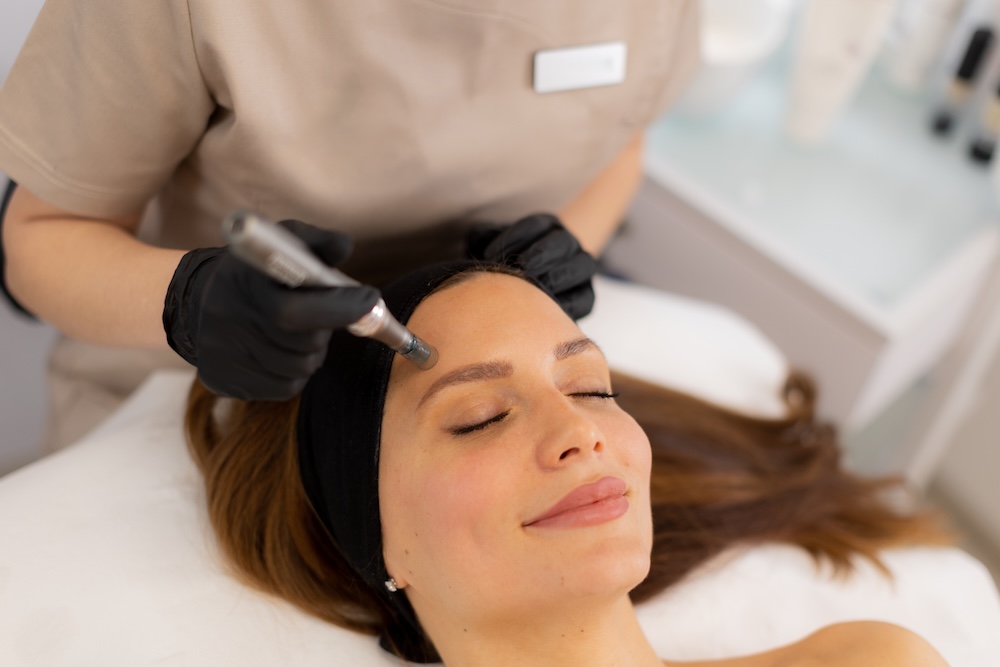Exploring how coenzyme NAD+ is shaping the future of anti-ageing skincare, from its role in cellular repair and energy to the challenges of formulating stable, effective products
Present in all living cells, coenzyme NAD+ (nicotinamide adenine dinucleotide) plays a crucial role in various biological processes, including energy metabolism, DNA repair and regulatory cell signalling.
“Scientifically, NAD+ consists of two nucleotides: nicotinamide adenine dinucleotide,” explains chemical engineer and Skin Masterclass founder Cigdem Kemal Yilmaz.
“The 'nicotinamide' part of the molecule is derived from niacin, also known as vitamin B3. The 'adenine' part is a nucleotide base involved in DNA and RNA synthesis. These two components are linked by phosphate groups.”
“Think of it as a kind of 'currency' that helps transfer energy between different chemical reactions in your body,” says Iain De Havilland, founder of clinic group and product NADclinic.
“Its involvement in metabolism, DNA repair, and cell signalling means that without NAD, your cells wouldn't be able to efficiently produce energy or carry out essential functions.”
Custodio d’Avo, brand director at skincare brand Swissline, adds that while NAD+ is exciting, it comes with complexity from a development standpoint. “All ingredients which could be described as innovative carry a certain degree of challenge in the sense that their interactions with other ingredients, overall stability and delivery are less known, in contrast with those ingredients which are known for a long time.”
How is NAD+ used in skincare?
NAD+’s inclination to boost cellular function makes it an ideal skincare ingredient.
“NAD+ levels in our bodies naturally decline with age, which is thought to contribute to age-related changes in cells with some sources suggesting that NAD+ levels are at 50% by the time we reach our forties,” says Yilmaz. “So, by supplementing NAD+ in skincare, we can help replenish cellular levels to improve the overall health and appearance of the skin.”
With compromised levels of NAD+, skin cells are less able to replicate and function while the skin becomes less able to tolerate inflammation, oxidative stress and toxin release.
A build up of these impaired cells can cause laxity, wrinkles, inflammation and a weakened skin barrier.
NAD+ is an active ingredient often added to serums, creams, and other topical formulations designed to be applied directly to the skin as either a targeted treatment, or in combination with other ingredients to target multiple concerns or aspects of skin health.
“These products typically contain stabilised forms of NAD+ that can penetrate the skin barrier and deliver the coenzyme to the underlying cells,” continues Yilmaz.
However, delivery and bioavailability remain debated. “It is easy to get confused between the delivery and the bioavailability of these molecules,” explains d’Avo.
“For skincare science the challenge is clear: as neither NMN or NAD+ have a known pathway to be made bioavailable topically, the challenge should be how to naturally activate their own synthesis, from the topical standpoint.”
He adds that only indirect pathways are currently realistic, saying, “Only indirect actions are possible, using enzymatic pathways which can activate skin’s own NAD+ expression.”
NAD+ can be used in professional treatments. Formulations appear in facials, chemical peels and microneedling protocols to boost results. It can additionally be administered intravenously or via oral supplements, with NMN showing particular promise in systemic rejuvenation.

What skin concerns is NAD+ good for?
One of NAD+’s primary functions in skincare formulations to target hyperpigmentation through its skin-lightening properties. “It does this by regulating melanin production, mitigating the skin’s inflammatory response and promoting cell renewal and repair processes,” says Yilmaz.
“This also helps maintain the integrity of skin cells and reduce the accumulation of DNA damage caused by environmental factors such as UV radiation and pollution.”
From d'Avo's perspective, the benefits are wide-ranging. “Anything that can have a role in mitochondrial health and energy levels results in revitalization and optimal repair capacity,” he explains.
“We should remind ourselves that skin is one of those fascinating organs which can renew, regenerate and make new. To facilitate this, one must have access to the key building blocks and messengers for renewal, NAD+ being a chief molecule for all cellular repair – all cells… not just skin cells.
"This means that lifeless, tired and lacklustre skin conditions will greatly benefit from it. It targets energy, DNA repair, skin texture, inflammation, and cellular aging pathways, smoothing wrinkles, lifting skin and fading age spots.”
Dr Nichola Conlon, molecular biologist specialising in cellular ageing, agrees: “NAD+ can support the overall health and appearance of the skin, by improving cellular health. This strategy promotes healthy skin from the inside out.”
What can NAD+ be combined with?
Incredibly versatile, combining or layering NAD+ with other skincare ingredients, not only enhances its efficacy, but can also provide added benefits for the skin…
Cigdem’s top NAD+ combinations
Combining NAD+ with antioxidants such as vitamin C, vitamin E, resveratrol, and coenzyme Q10 can help neutralise free radicals and protect the skin from oxidative stress. Antioxidants work synergistically with NAD+ to maintain skin health and prevent premature ageing.
As NAD+’s primary utilised function is to lighten areas of hyperpigmentation, layering NAD+ over mandelic acid (also good for hyperpigmentation) is very effective.
Additionally, it synergises well when in the same formula as alpha arbutin, kojic di-palmitate and azelaic acid. It also works best with antioxidants such as niacinamide and resveratrol. Clinical trials have also been conducted combining it with tretinoin at 0.02% with good results.
Pairing NAD+ with peptides like palmitoyl pentapeptide-4 (Matrixyl) or copper peptides can enhance the skin-rejuvenating effects and promote firmer, smoother skin.
Incorporating NAD+ with humectants such as hyaluronic acid can boost hydration levels, improve skin texture, and reduce the appearance of fine lines and wrinkles.
Pairing NAD+ with retinoids can enhance skin renewal processes, leading to smoother, more radiant skin with continued use.
Combining NAD+ with ceramides can reinforce the skin barrier, improve moisture retention, and enhance overall skin resilience and skin health.
A blend of NAD+ and alpha hydroxy acids (AHAs) such as glycolic acid, and lactic acid, and NAD+ with beta hydroxy acids (BHAs) such as salicylic acid can enhance exfoliation, promote cell turnover, and improve the absorption of NAD+ and other active ingredients.
Finally, pairing NAD+ with niacinamide (vitamin B3) can amplify its benefits, such as improving barrier function, inflammation reduction, and minimising the appearance of pores and hyperpigmentation, as well as supporting overall skin health1.
As with any active ingredient, consult with clients/patients fully before layering with NAD+ to establish any specific concerns or needs.
d’Avo also cautions against overemphasising a single active, saying, “No ingredient is a hero – only marketing can see them this way! In truth, good skincare is about overall formulation, synergies, the right concentrations and even more so the regular and disciplined application at the final-user standpoint.”

Which ingredients should not be used with NAD+?
While NAD+ is generally considered to be safe and compatible with many skincare ingredients, there are a few that may interact negatively with it or weaken its efficacy when layered together.
“The concentration in a formula varies between 0.5% ad 2%, and the stability of the ingredient is maintained when the pH of the final product is between 6-7.5 which means it cannot be integrated in the same formula with acids and LAA (L-ascorbic acid). However, it is safe to layer on top,” says Yilmaz.
NAD+ internally
"It is tricky to include the NAD+ molecule in skincare formulations as it breaks down easily," says Conlon who beleives the best way to keep your NAD+ levels topped up is orally with supplements.
NAD+ delivered via IV infusion is becoming increasingly popular with more and more clinics popping up offering the service
"This can benefit our skin, as it can prevent the formation of wrinkles, fine lines and sagging skin," she says.
Future of NAD+ in skincare
For d’Avo, the surge of interest reflects a wider shift in consumer awareness. “I think it is about a broader reality: epigenetics! The shift we are now talking about is on a different level – it’s an empowering perspective on epigenetics and the insights that position skincare in the crucial role of preventing the decline of the skin’s structural and metabolic integrity.”
Looking ahead, he says, “We are only beginning to scratch the surface, time will tell. But we are proud to be amongst the first wave of brands integrating these new molecules in skincare.”



